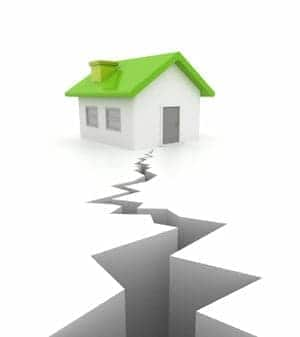What is an HO-3 insurance policy?
HO-3 homeowners insurance may sound complicated, but it’s one of the more straightforward types of homeowners insurance policies.
“HO-3 is insurance jargon, but it's a basic homeowner's policy,” says John Oakden, personal lines advisor at The Mahoney Group.
HO-3 homeowners insurance covers the structures on your property, like your house and a detached garage, your personal property and provides personal liability to cover you for injuries or damage for which you’re being held responsible.
What does an HO-3 policy cover?
While the specifics of HO-3 policy coverage can vary among different insurance providers and the type of coverage you choose, there are some basics that an HO-3 homeowners policy typically includes.
HO-3 insurance covers the following, per Oakden:
- The dwelling itself, such as the walls and roof of your home
- Additional structures on your property, such as a detached garage
- Personal property, such as your furniture, linens, electronics; and even your dishes and clothes fall under HO-3 personal property coverage
- Loss of use when you can’t live at home; for example, if you have to stay in a hotel while your home is being repaired under a covered claim
- Personal liability, which covers you if you’re at fault for injuries or damages and are sued
- Medical payments, which covers medical bills for someone injured on your property regardless of fault
“To add a wrinkle to it, there's an HO-5. And that's considered kind of an enhanced homeowners product,” says Oakden. “When you get an HO-5, that's covering a home for guaranteed replacements,” whereas an HO-3 “basic homeowner's policy will provide coverage up to the amount on the policy.”
For example, if a fire damages your home, causing you to file a claim, an HO-3 policy will only cover rebuilding your home up to the amount listed on the policy. In contrast, an HO-5 has“guaranteed replacement cost means the insurance company is going to pay to rebuild the home back to what it was,” Oakden says.
There are other differences between an HO-3 and an HO-5, such as coverage for personal property; an HO-3 only covers personal property at actual cash value while an HO-5 offers replacement cost coverage.
In most cases, you can get these coverages on an HO-3 policy via an endorsement.
There can be nuances that affect exactly what’s covered and how, so you should look into your homeowners insurance policy options closely rather than solely basing your decision on the HO code.
What are named and open perils?
On an HO-3 policy or other types of homeowners insurance, there is a list of the perils that are covered; you might see named perils, open perils, or both. The difference between them is that open perils policies cover anything not specifically excluded, while named perils specify what’s covered and anything not named is not covered.
Most HO-3 homeowners policies provide coverage for dwellings on an open peril basis, says Oakden, with exclusions for things like floods and earthquakes. However, HO-3 policies typically have named perils coverage for personal property, such as covering perils like fire and theft. If the peril is not listed, you might not be covered, so it’s important to clarify if your coverage works on a named or open peril basis for each type of coverage on a policy, including dwelling coverage, personal property and personal liability.
“It depends on where you live in the country, it depends on the company, and it depends on the product,” says Oakden.
HO-3 policy exclusions
While HO-3 policies often cover many perils, some are typically excluded. The two big exclusions are typically floods and earthquakes, says Oakden. However, it’s important to note that flood generally refers to water coming in over land, he says, as opposed to internal flooding due to an issue like a burst pipe.
So, be sure to look closely at any exclusions in your homeowners policy and make sure you understand what that means. In some cases, you can add coverage for exclusions via what’s known as an endorsement. The specifics depend on the insurer, but you may be able to pay extra to get that protection.
How to get an HO-3 policy
To buy an HO-3 policy, take some time to shop around with different providers. You can easily compare home insurance quotes online. You can also contact an independent insurance agent to help you compare HO-3 policies.
Not only should you look at prices, but you want to ensure you find the coverage that fits your needs.
“The biggest thing people need to come to terms with for insurance is what's important to you and what do you value?” says Oakden. While everyone wants to save money, he says, cutting costs isn’t always the best approach.
“Most people don't assume that they're ever going to need an insurance policy. But it's designed to show up on your absolute worst day to be able to help get you past the bad times,” he says.
Home insurance FAQs
Does an HO-3 policy cover flooding?
An HO-3 policy does not cover flooding from overland sources. Although its generally excluded, you may be able to add coverage via an endorsement, although most people need to buy separate flood insurance. Note, however, that water damage from issues like a pipe bursting inside your home is covered and not considered a flood.
What’s the difference between HO-2 and HO-3?
An HO-2 policy is generally a more basic form of homeowners insurance compared with an HO-3 policy. HO-2 policies only cover named perils, whereas HO-3 policies often have at least some components that operate on an open peril basis.







